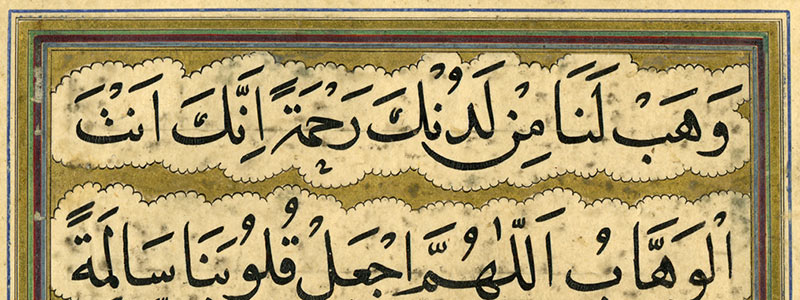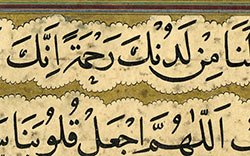Around the year 1694 CE, Ahmad Neyrizi was born in Neyriz to a Mohammad who was more widely known by his honorific title Shams-al-Din. After completing his elementary education, Ahmad traveled to the capital of the Safavid Empire in Isfahan during the reign of Shāh Solaymān Safavi (r. 1666-1694). It is believed that he first began practicing calligraphy with Mohammad Sādeq Tabrizi, and then in order to perfect the intricacies of his art, he found his way to the workshop of Mohammad Ebrāhim Qommi (the son of Mohammad Nasir). Although there are extant calligraphic works of Neyrizi in Thuluth, Reqā‘, Nasta‘liq and Shakastah Nasta‘liq, he made his mark by fashioning his own distinctive style of Naskh. While the Naskh script had slowly been coming into its own at this time, Ahmad Neyrizi significantly developed and structured it. Under his influence, Iranian Naskh gained formal recognition, elevating Neyrizi as the script’s most famous master.
Neyrizi worked not only like outstanding calligraphers of the court who created single-page works of calligraphy and albums but also worked like calligraphers who had to support themselves financially by copying difficult and important texts. Consequently, there are now thirty surviving copies of the Qu’ran bearing his signature. However, because of Neyrizi’s great fame, it is likely that a number of these were written by his students or other contemporary calligraphers who forged his signature. His earliest work that bears a date is from 1094 AH/1683 CE and the last of his extant works is dated 1160 AH/1747 CE. The dates on these manuscripts reveal that he had a career that spanned about seventy years.




